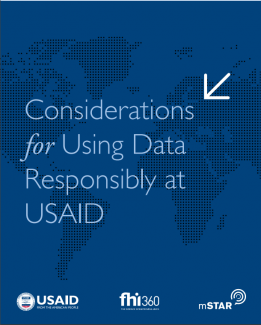Artificial Intelligence and Machine Learning
Emerging artificial intelligence and machine learning (AI/ML) applications promise to reshape healthcare, agriculture, economic growth, and democracy in the developing world. By improving efficiency, automating labor-intensive tasks, and finding new insights across large and complex data sets, AI and ML show tremendous potential for helping to achieve sustainable development objectives globally.
At the same time, the very nature of these tools — their ability to codify and reproduce patterns they detect — introduces significant concerns. As the development community adopts ML and AI tools, we need to ensure their application is effective, inclusive, and fair. The following resources take steps to help the development community recognize when AI is a suitable solution, recognize when and where these technologies can do harm, and provide guidance on how to address and mitigate harms that may arise in developing country contexts.
Reflecting the Past, Shaping the Future: Making AI Work for International Development
What is it?
A report outlining the promise of AI and the reasons for caution when AI is deployed in development and humanitarian contexts.
What does it cover?
A scoping overview of AI technology, description of AI applications in global development, illustrations of the risks and benefits of AI in development contexts, best practices for working with these technologies, and the critical role of development practitioners in ensuring responsible use of these tools.
Who is it for?
People with limited technical experience navigating the emerging AI landscape, or who understand AI but are less familiar with international development issues. Donors, implementers, and other development partners should expect to come away with a basic grasp of common AI techniques and the problems AI is well-suited to solve.
The Executive Summary is here, and the Full Report is here.
Managing Machine Learning Project in International Development: A Practical Guide
What is it?
A modular, interactive guide that walks through the AI lifecycle from design to sustainment, noting where and how development practitioners’ expertise is essential along the process.
What does it cover?
Practical guidance on responsible and inclusive design, strategic partnerships, adaptive management, sustainability, and the enabling environment for AI. The goal of this guide is to strengthen understanding of how these technologies can be appropriately applied, integrated, and managed for positive impact.
Who is it for?
Development practitioners who may not be trained technologists, but who are involved with or responsible for implementing projects that might have a technical AI component.
Additional Resources for Development Practitioners
- NetHope Emerging Technologies Resources
Toolkits for running workshops to raise awareness on suitability of AI, development and humanitarian use cases, and identifying ethics issues related to fairness. Toolkits include slide decks and facilitator guides for running a workshop - Artificial Intelligence in Global Health: Defining a Path Forward
Identification of potential use cases in health sector and overview of challenges to broader uptake in global health sector - Data and Advanced Analytics in HIV Service Delivery
Identification of high-impact use cases in HIV service delivery and illustrative process of identifying high impact use cases more broadly - Exploring Fairness in Machine Learning for International Development
Analysis on achieving fairness and avoiding bias when developing a machine learning project for use in international development
Related Resources
- Considerations for Using Data Responsibly at USAID
General considerations for data use; applicable to most data-driven technologies - Principles for Digital Development
General principles for the use of digital tools in development - Digital Investment Tool
Interactive tool to guide considerations for investing in specific digital tools and or systems in the context of development programming







